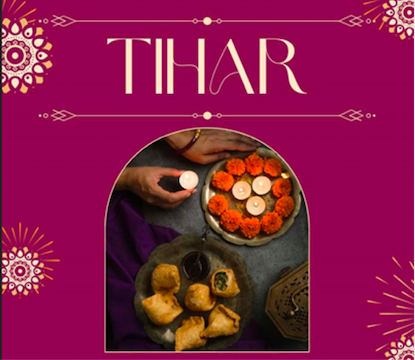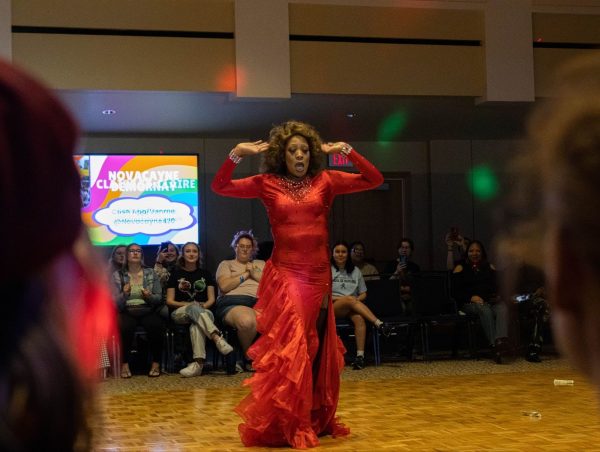International House hosts Tihar celebration

International club hosts Tihar celebration. Tihar is a large festival celebrated between October and November.
On Wednesday, Oct. 26, the International House hosted Tihar, a vivid and spectacular cultural celebration. While this special occasion was organized with Nepalese students in mind, students from any culture were welcomed to attend.
Tihar is one of the most significant and auspicious festivals in Nepal, which is celebrated mainly by Hindus. It falls between the month of October or November and lasts for five days. During the festival, people use flowers, string lights, oil lamps and candles to decorate houses, buildings and other infrastructures. The most enjoyable and special attractions on the occasion are making “Rangoli”, a work of art using color on the floor, playing with fireworks and singing the traditional culture song called “Deusi Bhailo.”
“Of the many pleasurable international moments amid the Fall semester, I received a remarkable delight amongst the Nepali students singing and celebrating Tihar outside the International House last Wednesday,” said Andy Vogel, coordinator of international student recruitment and retention. “I find the joy offered by learning a new song or game or sampling unfamiliar food unparalleled.”
The five days are honored with various impassioned gestures, each with unique importance. The first day is dedicated to crows because they are believed to be the messengers of the death god Yama, and are worshiped with offerings of grains, seeds and sweets placed on the roofs or out on the streets.
The second day is dedicated to dogs for their loyalty and honesty. The third day is dedicated to cows as the second representation of the goddess Laxmi. The fourth day is dedicated to the goddess Laxmi herself, the protector of riches and prosperity and the victory of good over evil.
The last day of Tihar, known as “Bhai tika,” is centered around a myth. It is believed that Yama, the god of death, was not found by his sister, Yamuna, regardless of how she tried to reach him. Finally, the nervous sister met her brother and blessed him with a long life which signifies the beginning celebrations of “Bhai tika.”
This ritual strengthens the pure bond between a brother and a sister and enhances the respect, care and support between them. During the ritual, various meaningful presents are exchanged as a symbol of love and affection.
During the occasion, students lit oil lamps and celebrated Tihar by setting off firecrackers. There were several Nepali delicacies to try like rice, “palak paneer,” butter chicken, “chole saag” and “yellow dal.” Following that, a traditional Tihar song was played and all attendees enjoyed playing cards.
“Tihar is mostly associated with my culture and delicacies such as spicy mixed vegetable pickles, dry fruits and round soft rice flour, rotis such as ‘puri,’ ‘sel roti’ and rice pudding,” said Stuti Ghimire, a freshmen data analytics and finance major.
“I hope more students will take advantage of these opportunities to experience the thrill of remote international travel on their campus through interaction with the international student population at WU,” Vogel said.
Edited by Rakesh Swarnakar, Glorianna Noland, Simran Shrestha
Your donation will support the student journalists of Washburn University. Your contribution will allow us to purchase equipment and cover our annual website hosting costs.








